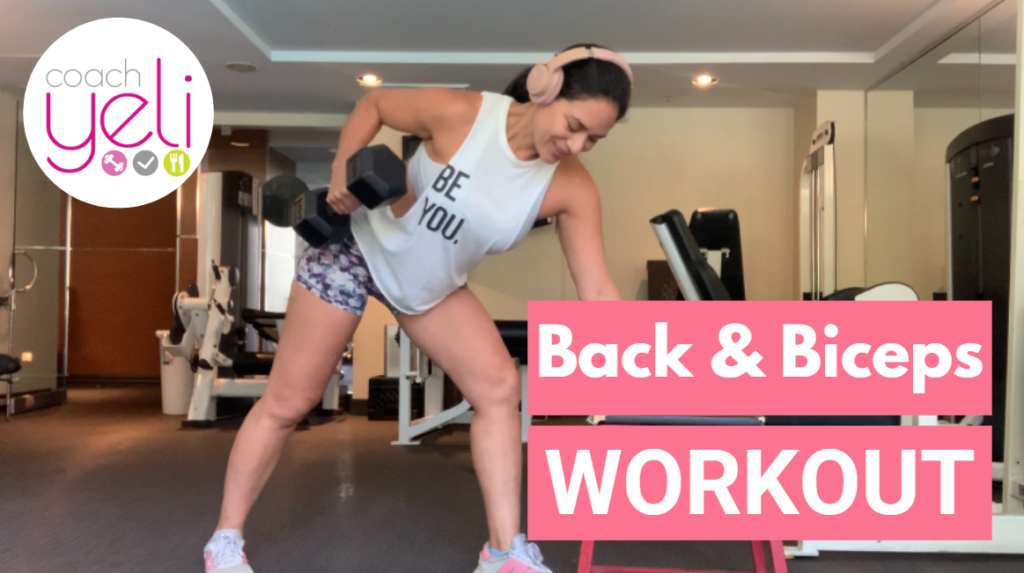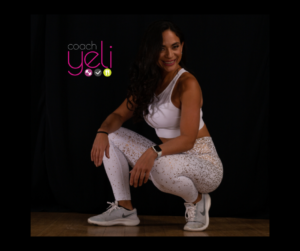Get ready for a great circuit that will make your arms be more toned and will make your back muscles burn. You will find 9 exercises. In my circuit (which I show you in the video below) I alternated back and biceps, so you can do that as well, or just do the back moves first and then bicep moves second. It will actually depend on how the setup is at your gym and also on how packed it is.
Find the exact way to perform each move below.
Lat Pull Down
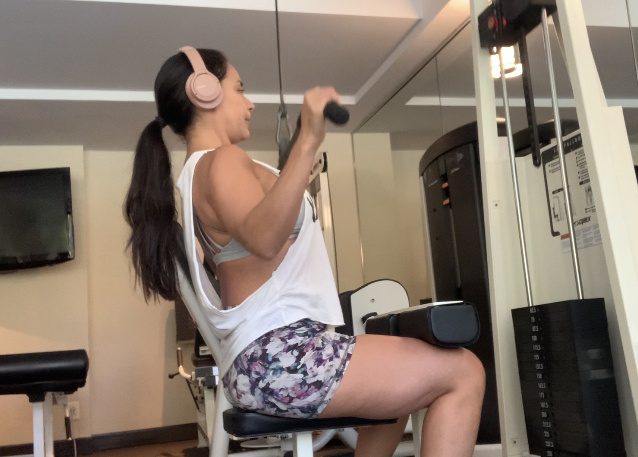
Why should we do it?
The lat pulldown works the latissimus dorsi, the largest muscle in the back, as well as your biceps, rear delts, rhomboids and traps. This movement gives you the opportunity to train many muscles at the same time, and develop overall strength in your back and upper body.
How to do it properly?
- Sit comfortably on the pulldown seat, with your feet flat on the floor.
- Grasp the bar with a wide grip with an overhand, knuckles-up grip. Other positions and grips are possible but start with this standard position.
- Pull the bar down until it’s approximately level with the chin. Exhale on the downward motion. While shifting slightly backward is OK, aim to keep your upper torso stationary. Keep your feet flat on the floor and engage your abs as you pull. The bottom of the motion should be where your elbows can’t move downward anymore without moving backward. Be sure to stop at that point and do not go lower.
- Squeeze the shoulder blades together while maintaining square shoulders.
- From the bottom position, with the bar close to your chin, slowly return the bar to the starting position while controlling its gradual ascent. Don’t let it crash into the weight plates.
Hammer Curls
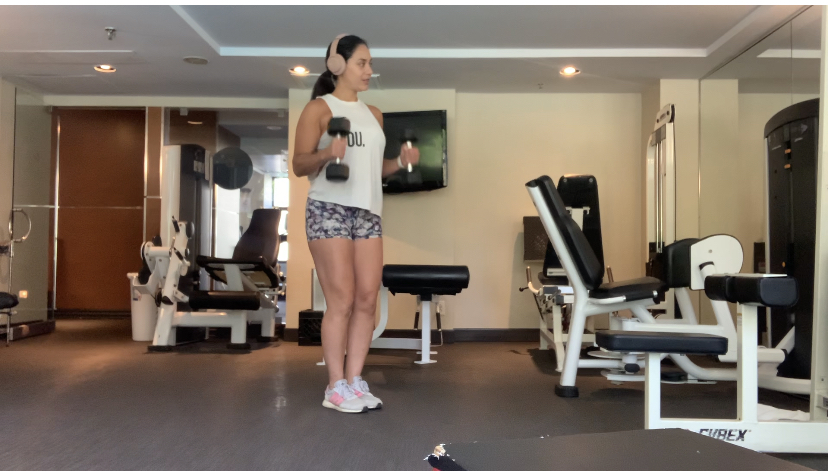
Why should we do it?
Thisl is an excellent addition to an upper-body strength routine. A hammer curl is a variation of the biceps curl and targets muscles in the upper and lower arm.
How to do it properly?
- Stand with your legs straight (but not stiff or locked) and knees aligned under the hips. Your arms are at your side with a dumbbell in each hand, the weights resting next to the outer thigh. Your palms are facing the thighs, the thumbs are facing forward, and shoulders are relaxed.
- Bend at the elbow, lifting the lower arms to pull the weights toward the shoulders. Your upper arms are stationary, and your wrists align with the forearms.
- Lower the weights to return to the starting position.
One-arm Dumbbell Row
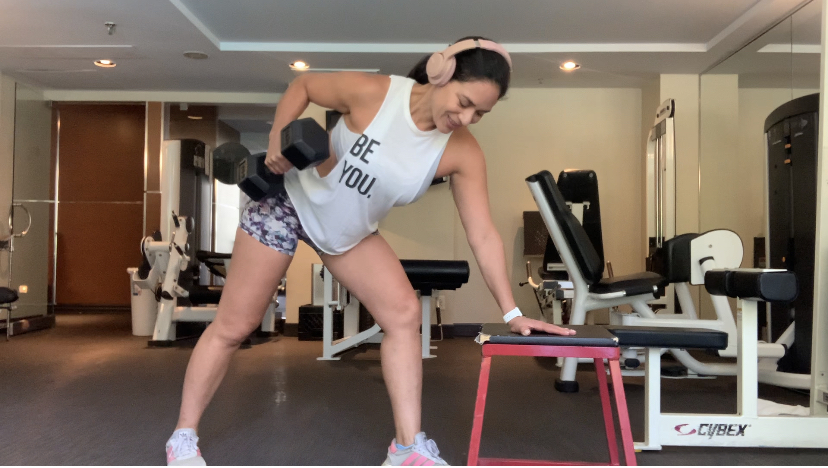
Why should we do it?
This movement targets the upper and lower back, shoulders, biceps, and hips while improving core stability.
How to do it properly?
- Holding a dumbbell in your right hand, bend over to place your left knee and left hand on a bench to support your body weight. Your hand should be placed directly under your shoulder and your knees should be positioned directly under your hips. Gently contract your core muscles to stiffen your torso and stabilize your spine. Your back should be flat and head aligned with your spine. Extend your right arm (holding the dumbbell) towards the floor without allowing your torso to rotate or shoulder to move towards the floor.
- Exhale and slowly pull the dumbbell upwards, bending your elbow and pulling your upper arm backwards.
- Inhale and gently lower the dumbbell to your starting position while maintaining a flat back and retracted (pulled back) shoulder position.
Bicep Curls with slight external rotation
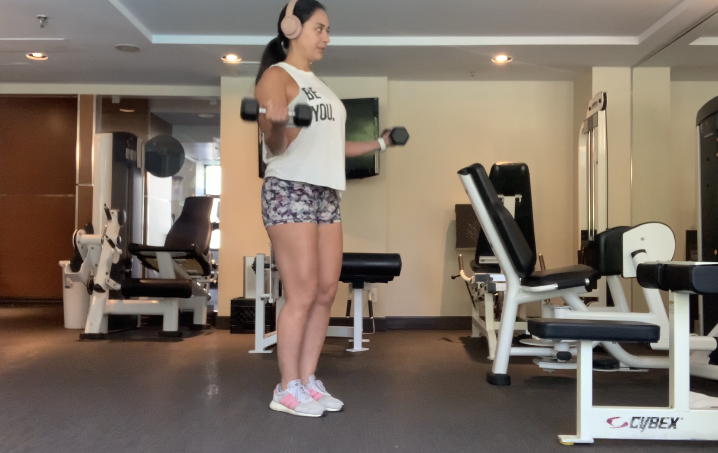
Why should we do it?
This variation isolates the body movement of elbow flexion, or rather bending of the arm at the elbow.
How to do it properly?
- Start standing with a dumbbell in each hand. Your elbows should rest at your sides and your forearms should extend out in front of your body.
- Externally rotate your elbows bringing your hands away from the midline.
- Bring the dumbbells all the way up to your shoulders by bending your elbows.
- Reverse the curl slowly and repeat.
Standing Lat Pushdown (Cable Machine)
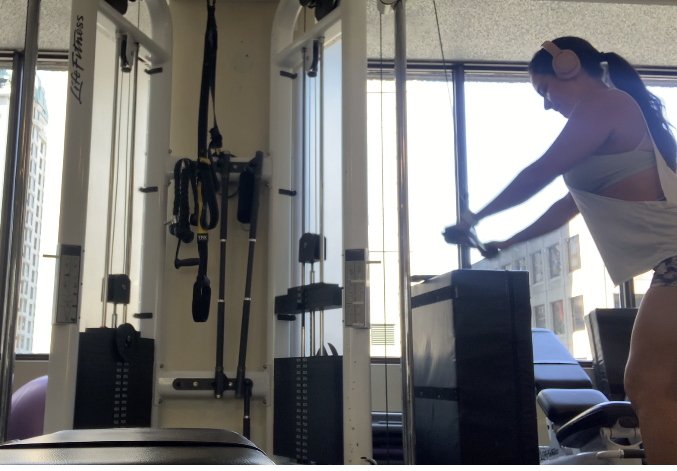
Why should we do it?
This movement targets the back, arms, and abdominal muscles. It is a compound, multi-joint movement that builds strength and requires your body to engage the core and abs for balance while performing it.
How to do it properly?
- Brace the abdominals.Grab the hand attachments in an overhand grip about shoulder-width apart, with elbows locked and arms straight. Keep your knees soft rather than locked.
- Breathe out while pulling the cable down to your thighs in a smooth, controlled motion, arms remaining straight, hips bending slightly forward while keeping the back straight. If you do this exercise correctly, you will find that your abdominal muscles will work hard, and your arms and back will also get some work.
- Pause when the hand grips are at thigh level.
- Inhale while allowing the weights to return to full arm extension above your head.
Bicep Curls + Isometric Contraction
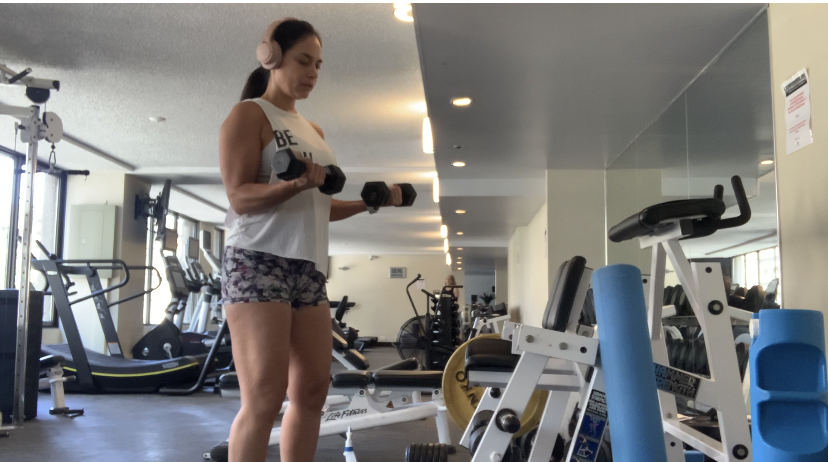
Why should we do it?
We know that the bicep curl will target your biceps, but did you know that holding the contraction will increase the time your muscles are under tension.
How to do it properly?
Version 1: down to half-way up:
- Start standing with a dumbbell in each hand. Your elbows should rest at your sides and your forearms should extend out in front of your body.
- Bring the dumbbells half way up by bending your elbows.
- Reverse the curl slowly and repeat.
Version 2: down to half-way down:
1. Start standing with a dumbbell in each hand with your elbows completely bent so that the dumbbells are close to your shoulders.
2. Bring the dumbbells half way down by extending your elbows.
3. Reverse the movement slowly and repeat.
Isometric contraction:
Stand with your abs drawn in. Hold one dumbbell in each of your hands. Bend your arms to 90 degrees, close to your sides and hold for at least 10 seconds.
Bent Over Dumbbell Reverse Fly
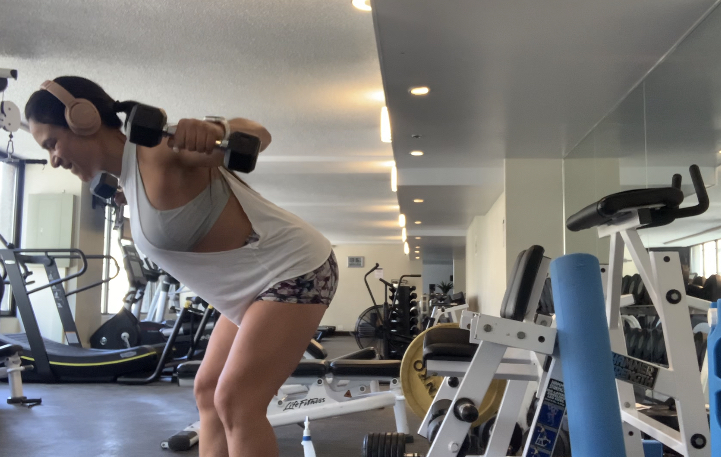
Why should we do it?
The reverse fly targets the posterior deltoids (rear shoulders) and major upper back muscles (rhomboids and trapezius). Strengthening these muscles helps improve poor posture, promotes an upright stance, and improves balance.
How to do it properly?
- Select the desired weight from the rack then take a few steps back into an open area.
- Hinge from the hips until your body is almost parallel to the floor and allow the arms to hang straight down from the shoulders with a neutral grip.
- Take a deep breath and pull the dumbbells towards the ceiling using the rear deltoids.
- Slowly lower the dumbbells back to the starting position under control.
- Repeat for the desired number of repetitions.
Bicep Curl Variation (also called Zotman Curls)
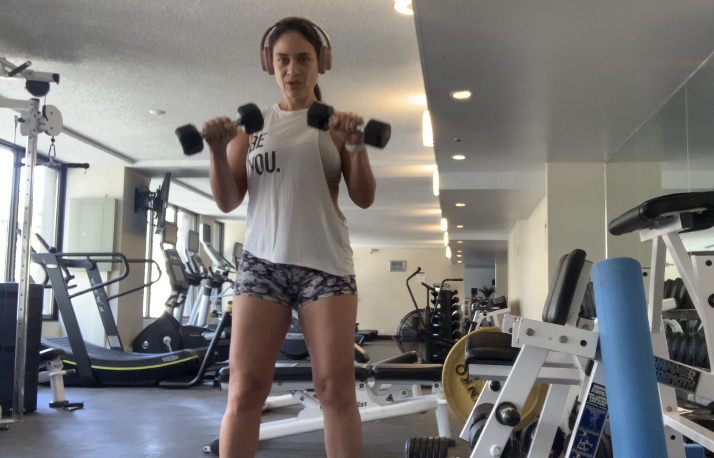
Why should we do it?
This is still a bicep curl at heart, so it is a direct biceps builder. However, it also gives you the opportunity to increase forearm size and grip strength as you lower the load.
How to do it properly?
- Start standing with a dumbbell in each hand. Your elbows should rest at your sides and your forearms should extend out in front of your body.
- Keeping your back straight, contract your biceps to curl the dumbbells upwards.
- Squeeze your biceps hard at the top and twist your hands so that your palms face downwards.
- Slowly lower the dumbbells to the starting position and twist your hands so that your palms are facing forward again.
Barbell Bent Over Row (supine grip)

Why should we do it?
This move will build size and strength in both the lower and upper back. It targets nearly all of the muscles in the back, but particularly the lats, rhomboids, and lower back, as well as the biceps.
How to do it properly?
- Standing, your knees slightly bent. Grasp the bar with an underhand grip (supinated) with your hands at about shoulders width apart.
- Lean forward while keeping your back straight and your chest bulged.
- Pull the bar towards your belly button. Squeeze your back at the top of the movement, driving your shoulders and elbows behind the body.
- Slowly come back to the starting position. Keep your elbows tucked in throughout the movement.

